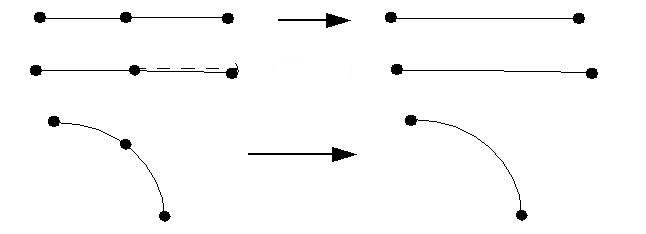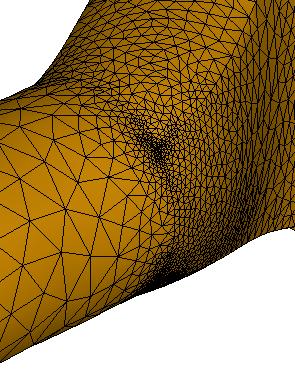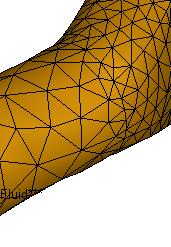Edge Merging
Edge Merging unifies edges that meet at a common vertex at an inflection angle less than a specified tolerance. This tool provides the benefit of reducing the number of edges, especially small ones, which leads to reduced overall mesh density, and faster analysis times.
The inflection point is determined by the included tangency angle which has an upper limit in the Edge Merging dialog of 15 degrees.
To access Edge Merging, click Setup (tab) > Setup Tasks (panel) > Geometry Tools, and click the Edge Merge tab.
Alternatively, right click on the Geometry branch of the Design Study bar, and click Edit...
About Edge Merging

Edge Merging will have no effect if more than two edges meet at a vertex (as shown on the left). Likewise, it will not merge edges that meet at an included angle larger than the specified angle (shown on the right):

Using Edge Merging
When the Edge Merge tab is active, edges that can be merged are marked with an arrow. The mesh that is created on the geometry without merged edges is also shown.
 |  |
Edges to be merged are identified by selection of the included angle; there is no provision for direct selection of edges. The process is described:
The default included angle is 5 degrees. Vary this value as needed, but be careful not to select a value that will remove intentional vertices.
The number of edges to be merged is shown.
Click the Merge button to invoke the command.
Image of mesh after edges are merged:
